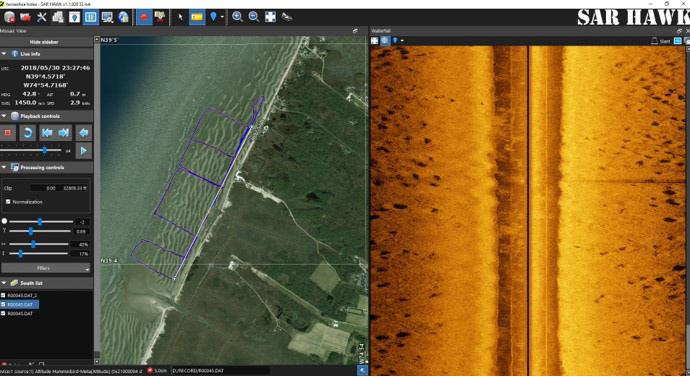Aboard Stockton Marine Field Station's RV Osprey using a Side Scan Sonar Klein 3900 and Humminbird MEGA to track the migration of Horseshoe Crabs in Delaware Bay. We discovered behavior and confirmed the as the crabs migrate into an area they tend to stay, evidenced by the burrows or 'craters' marked in some of the images. Going into this we weren't sure if the crabs would absorb or reflect the sonar signals. So to test the data we trawled the bottom after recording the targets. In the bottom two images you can see the sonar caught out trawl with a good sampling of crabs. This helped verify the targets. We believe this is the first instance of using side scan sonar to collect migratory data and imagery in real-time of a marine species.
In the images below are the tech we used, the area in which we sampled crab populations and evidence of burrowing behavior between spawning sessions on the beaches and the interaction of the migration movement through man-made oyster farming structures.
